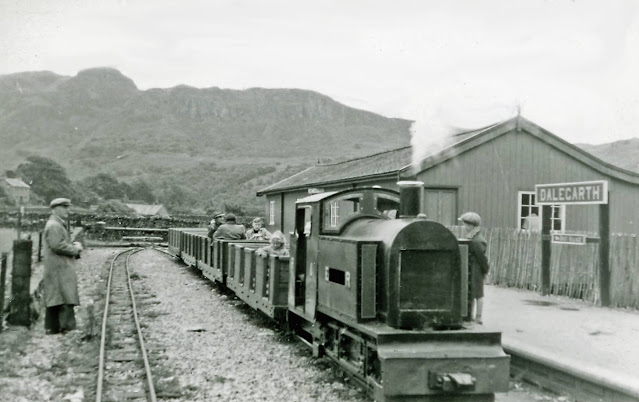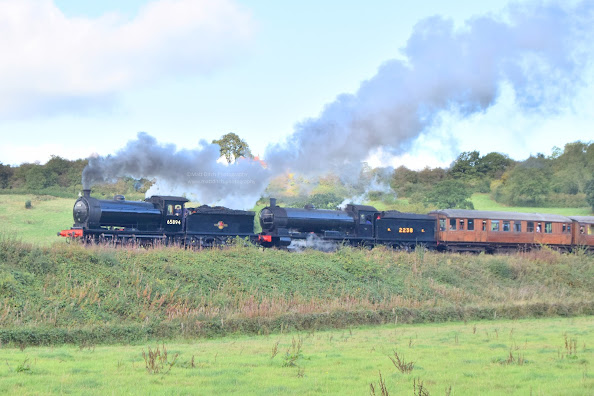The Owd Ratty: Gill Force Tramway
The Owd Ratty: Gill Force Tramway
In the previous post (link here) I covered the history of the Owd Ratty and the line up to Boot in Eskdale. I mentioned that at Gill Force junction the line split and a tramway ran to the mines at Gill Force. The history of this part of the Owd Ratty is not as well documented as the Boot branch and to date there are no known images of the line. What is known is that the line was built in 1880 for the “South Cumberland Iron Company” they were looking for Iron ore on the opposite side of the valley to the mines at Nab Gill. The mines weren’t very successful and only lasted a few years closing completely in 1884.
The site of Gill Force junction today. As I stated in the last post, the line to Boot carried on straight ahead, what is today the dirt road while the tramway branched off to the right. Today part of the Gill Force tramway has been reopened as part of the present day 15inch railway to Dalegarth.
The dry stone walls that border both sides of the track on the approach to Dalegarth are an original feature from 3 foot days. They are believed to have been built using spoil from the mines at Gill Force. The above picture shows River Irt leaving Dalegarth with a train for Ravenglass. The line to Boot runs behind the cottages.
Shortly before entering what is today Dalegarth station the railway crosses over Whillan Beck. The above image shows the railways newest engine, also named Whillan Beck. The bridge here has been rebuilt since 3ft days.
The current terminus at Dalegarth. Some records show that the 3 foot railway ended here and that the line to Gill force from this point was 2 Ft gauge. Other reports show that the 3 foot extended the full length of the tramway to Gill Force which, seems more likely.
“Northern Rock” is about to be turned on the turntable at Dalegarth ready for the return journey to Ravenglass. From here the original tramway would have crossed the main road via a level crossing and carried on in the direction of St. Catherine’s Church. Crossing the main road proved slightly challenging for those building the tramway. The builders had long discussions with the local Parish council about how to best cross the road. One suggestion was via a bridge, which would have required significant earthworks on both sides of the road. The trackbed directly after Dalegarth station is private farmland and traces of the railway are hard to see but, not impossible…
A section of walled trackbed. Given the spacing of the two walls, I’d personally guess that this section was built to 3 Foot gauge. Since taking this picture this section has been reopened as a footpath as far as the access road for St. Catherine’s Church. A further disused section of walled track heads back in the direction of Dalegarth. But, is not open to the public.
Looking in the opposite direction to the previous two images and in the direction of Gill Force. There are some conflicting reports on what the track layout was at this location. Some old OS maps show a loop starting near this location with the track continuing on across the River Esk. The bridge still remains and its size does suggest that it could have carried the 3 foot gauge line. Another plan of the site shows that there were two long sidings, again starting about this point which ended just before the bridge with a transshipment point. The track across the bridge and to the mines on this plan are 2 foot gauge.
The girder bridge across the River Esk at Gill Force. The mines were located on the opposite side. The next set of photos was taken on the other side of the bridge.
Looking down what is probably the course of the siding that went to the spoil tip, now a footpath. I’d imagine that this would have been 2 foot gauge as the spoil would have came directly from the mines, which mostly likely would have been 2 foot gauge.
Two of the original mine entrances. These were very cramped and very old so I did not venture in. I believe since taking these pictures that these entrances have either collapsed or been filled in.
As the pictures show, besides the girder bridge there is little else to see at Gill force that would suggest it was once a rail served mine. The site has returned to nature and is now home to many different forms of wildlife, as the below picture shows! (It's a common Lizard)

















Comments
Post a Comment